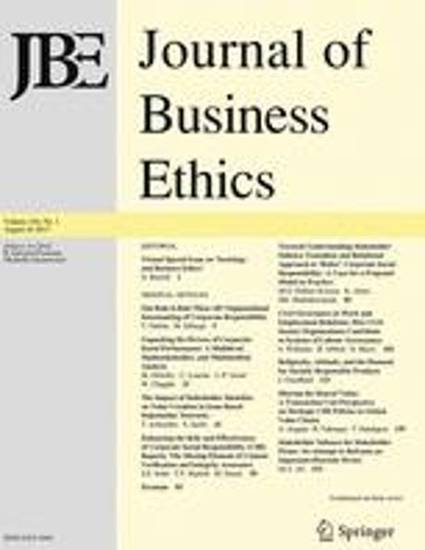
Article
The EThIC Model of Virtue-Based Allyship Development: A New Approach to Equity and Inclusion in Organizations
Journal of Business Ethics
(2021)
Abstract
As organizations take on grand challenges in gender equality, anti-racism, LGBTQ+ protections and workplace inclusion, many well-intentioned individuals from dominant groups (e.g., cisgender men, Caucasian, heterosexual) are stepping forward as allies toward underrepresented or marginalized group members (e.g., cisgender women, People of Color, LGBTQ+ identified employees). Past research and guidance assume an inevitable need for external motivation, reflected in the ‘business case’ for diversity and in top-down policies to drive equity and inclusion efforts. This qualitative study explored internal motivations in the form of morally motivated virtues of 25 peer-nominated exemplary allies serving in leadership positions. In-depth life/career story interviews were used to identify the virtues that supported their allyship journeys. Findings demonstrated that they tapped into several virtues that served distinct functions in a 4-stage allyship development process: Stage 1—Energizing psychological investment (compassion, fairness); Stage 2—Thinking through allyship-relevant complexities (intellectual humility, perspective-taking, wisdom); Stage 3—Initiating action (prudence, moral courage, honesty); Stage 4—Committing to allyship (perseverance, patience). We call this the ‘EThIC model of virtue-based allyship development.’ This study has implications for theory and research on a virtue-based approach to diversity, equity and inclusion.
Keywords
- allyship,
- EThIC model,
- virtue,
- allyship development
Disciplines
Publication Date
Fall November 22, 2021
DOI
https://doi.org/10.1007/s10551-021-05002-z
Citation Information
Warren, M.A., Warren, M.T. The EThIC Model of Virtue-Based Allyship Development: A New Approach to Equity and Inclusion in Organizations. J Bus Ethics (2021). https://doi.org/10.1007/s10551-021-05002-z
Creative Commons license

This work is licensed under a Creative Commons CC_BY-NC-ND International License.
